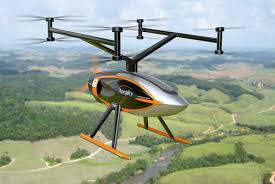
Breaking News
 Tuesday War Room LIVE: Trump Mentioned in ANOTHER Big Batch of Epstein Files...
Tuesday War Room LIVE: Trump Mentioned in ANOTHER Big Batch of Epstein Files...
 Trump Names Louisiana Gov. Jeff Landry Special Envoy to Greenland
Trump Names Louisiana Gov. Jeff Landry Special Envoy to Greenland
 The Box Office Crisis Is Worse Than It Looks
The Box Office Crisis Is Worse Than It Looks
 Will The CME Raid The Silver Party?
Will The CME Raid The Silver Party?
Top Tech News
 Travel gadget promises to dry and iron your clothes – totally hands-free
Travel gadget promises to dry and iron your clothes – totally hands-free
 Perfect Aircrete, Kitchen Ingredients.
Perfect Aircrete, Kitchen Ingredients.
 Futuristic pixel-raising display lets you feel what's onscreen
Futuristic pixel-raising display lets you feel what's onscreen
 Cutting-Edge Facility Generates Pure Water and Hydrogen Fuel from Seawater for Mere Pennies
Cutting-Edge Facility Generates Pure Water and Hydrogen Fuel from Seawater for Mere Pennies
 This tiny dev board is packed with features for ambitious makers
This tiny dev board is packed with features for ambitious makers
 Scientists Discover Gel to Regrow Tooth Enamel
Scientists Discover Gel to Regrow Tooth Enamel
 Vitamin C and Dandelion Root Killing Cancer Cells -- as Former CDC Director Calls for COVID-19...
Vitamin C and Dandelion Root Killing Cancer Cells -- as Former CDC Director Calls for COVID-19...
 Galactic Brain: US firm plans space-based data centers, power grid to challenge China
Galactic Brain: US firm plans space-based data centers, power grid to challenge China
 A microbial cleanup for glyphosate just earned a patent. Here's why that matters
A microbial cleanup for glyphosate just earned a patent. Here's why that matters
 Japan Breaks Internet Speed Record with 5 Million Times Faster Data Transfer
Japan Breaks Internet Speed Record with 5 Million Times Faster Data Transfer
Cargo-carrying long range VTOL moves to full scale prototype stage

Florida's Aergility has spent the last few years developing and testing a new kind of vertical take-off and landing aircraft (VTOL) called the ATLIS. The wingless autonomous delivery drone is being designed to fly at 100 mph for hundreds of miles on a single tank of gas, making use of a proprietary lift and control system called managed autorotation.
The ATLIS VTOL features an array of eight electric rotors to provide lift and control, and a gas-powered prop at the rear for forward momentum. While in the air, this "very unconventional gyrocopter" makes use of something Aergility is calling managed autorotation.
Company founder and CEO Jim Vander Mey told General Aviation News that the patent-pending system uses a flight controller to manage the revs of the rotors. Lift is achieved by powering up all of the rotors at the same time, while firing up select rotors and simultaneously slowing down others helps with turning. Regen braking is used to recoup energy expended during take-off and landing, meaning that "there is no net electrical energy consumed over the course of the flight."




